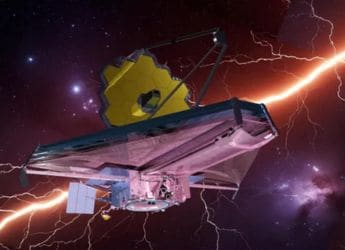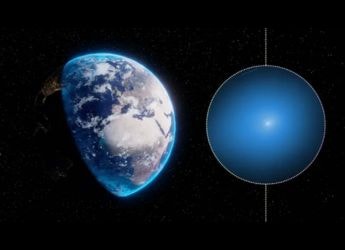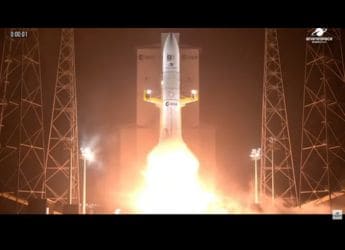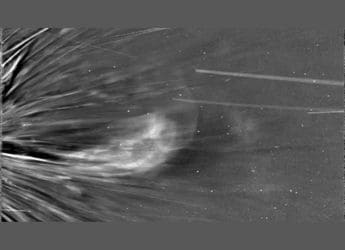- Home
- Science
- Science News
- Ammonium Hydrosulfide Identified as Primary Component of Jupiter’s Clouds, Not Ammonia
Ammonium Hydrosulfide Identified as Primary Component of Jupiter’s Clouds, Not Ammonia
Recent studies reveal Jupiter's clouds are formed from ammonium hydrosulfide mixed with photochemical materials

Photo Credit: Pixabay/GustavoAckles
Jupiter's clouds, showing they are not primarily composed of ammonia ice
Recent findings have challenged the traditional understanding of Jupiter's clouds, showing they are not primarily composed of ammonia ice. Instead, it has been discovered that the clouds are formed from ammonium hydrosulfide mixed with photochemical materials. This revelation, achieved through a collaboration of professional and amateur astronomers, sheds new light on the composition and dynamics of Jupiter's atmosphere, offering simpler methods for mapping the planet's cloud layers.
Ammonium Hydrosulfide Identified as Main Cloud Component
According to the study published in the Journal of Geophysical Research: Planets, the breakthrough came after amateur astronomer Dr. Steven Hill developed a method using commercial telescopes and specific filters to measure ammonia abundance and cloud-top pressures. His technique demonstrated that the clouds reside in warmer regions of Jupiter's atmosphere, deeper than the expected ammonia cloud layer. This conclusion was confirmed when the method was applied to data from the Multi Unit Spectroscopic Explorer (MUSE) instrument on the Very Large Telescope in Chile.
Professor Patrick Irwin of the University of Oxford explained to phys.org that the simulations showed light interacting with gases at higher pressures and temperatures. This ruled out ammonia ice as the main component of the clouds and instead pointed to ammonium hydrosulfide mixed with smog-like materials. These substances are believed to contribute to the planet's characteristic red and brown hues.
New Opportunities for Citizen Science
The study highlights how Dr. Hill's method, which compares brightness levels in narrow color filters, matched the accuracy of complex computational techniques. According to a statement made to phys.org by John Rogers of the British Astronomical Association, this simpler method allows amateurs to frequently monitor variations in Jupiter's atmospheric features, linking chemical changes to observable weather phenomena like storms and the Great Red Spot.
Photochemical reactions in Jupiter's atmosphere are thought to prevent ammonia from condensing into clouds. Similar observations were made on Saturn, suggesting that photochemical processes play a significant role in shaping the atmospheres of gas giants.
Get your daily dose of tech news, reviews, and insights, in under 80 characters on Gadgets 360 Turbo. Connect with fellow tech lovers on our Forum. Follow us on X, Facebook, WhatsApp, Threads and Google News for instant updates. Catch all the action on our YouTube channel.
Related Stories
- Samsung Galaxy Unpacked 2025
- ChatGPT
- Redmi Note 14 Pro+
- iPhone 16
- Apple Vision Pro
- Oneplus 12
- OnePlus Nord CE 3 Lite 5G
- iPhone 13
- Xiaomi 14 Pro
- Oppo Find N3
- Tecno Spark Go (2023)
- Realme V30
- Best Phones Under 25000
- Samsung Galaxy S24 Series
- Cryptocurrency
- iQoo 12
- Samsung Galaxy S24 Ultra
- Giottus
- Samsung Galaxy Z Flip 5
- Apple 'Scary Fast'
- Housefull 5
- GoPro Hero 12 Black Review
- Invincible Season 2
- JioGlass
- HD Ready TV
- Laptop Under 50000
- Smartwatch Under 10000
- Latest Mobile Phones
- Compare Phones
- OnePlus 15R
- Realme Narzo 90x 5G
- Realme Narzo 90 5G
- Vivo S50 Pro Mini
- Vivo S50
- OPPO Reno 15c
- Redmi Note 15 5G
- Redmi Note 15 Pro 5G
- Asus ProArt P16
- MacBook Pro 14-inch (M5, 2025)
- OnePlus Pad Go 2
- Poco Pad M1
- Just Corseca Skywatch Pro
- Honor Watch X5
- Acerpure Nitro Z Series 100-inch QLED TV
- Samsung 43 Inch LED Ultra HD (4K) Smart TV (UA43UE81AFULXL)
- Asus ROG Ally
- Nintendo Switch Lite
- Haier 1.6 Ton 5 Star Inverter Split AC (HSU19G-MZAID5BN-INV)
- Haier 1.6 Ton 5 Star Inverter Split AC (HSU19G-MZAIM5BN-INV)

















